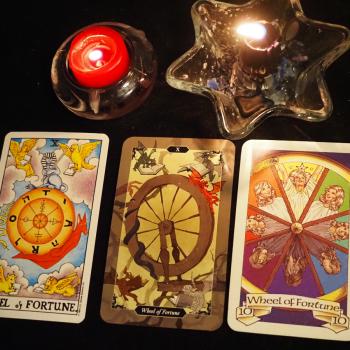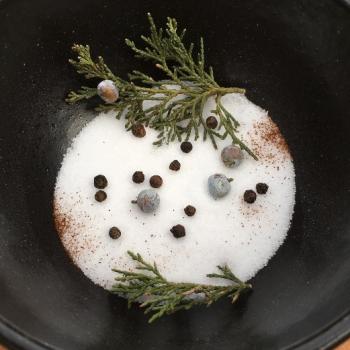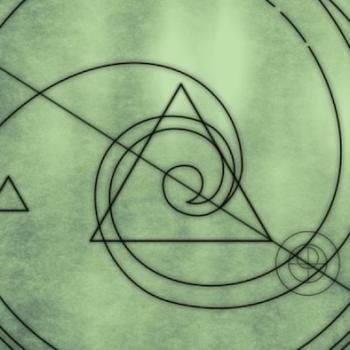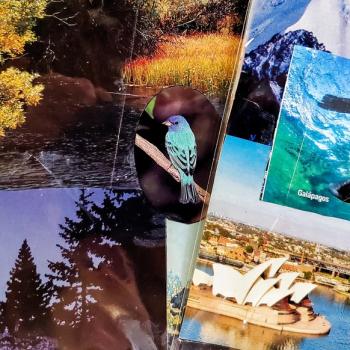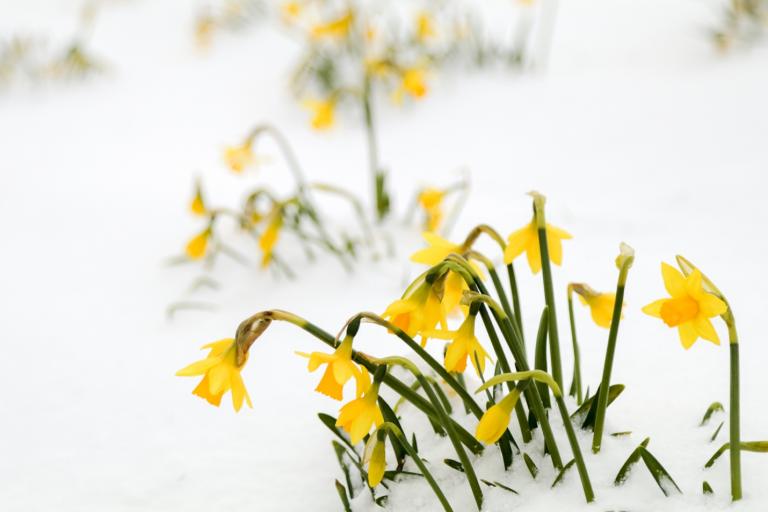
Introduction
Contemporary Paganism is deeply rooted in a European past. For all of us who have some European heritage, those ancestors were pagan before the introduction of Christianity. Although modern Pagans draw on many non-European sources including the ancient beliefs and practices from Egyptian, Roman and Greek, Asian, Native American and African cultures, the native religions of pre-Christian Europe are our own heritage.
In this series, I will use the Wheel of the Year used by many modern Pagans to explore seasonal practices that you can incorporate into your life. I am using the generic descriptions of the seasons as if they apply to everyone. I know that they don’t. If you don’t live in North America or Europe, or if you live in certain areas of the United States, some of these descriptions of the seasons won’t make sense to you. Feel free to adjust my suggestions based on your own environment.

Imbolc (Candlemas, Brigit’s Day)
Imbolc (February 2) is a celebration of the coming spring, comes halfway between the long night of the winter solstice and the balance of the spring equinox. Night is waning, and the sun is rising earlier and setting later, making each day a little longer. This is the time for us to awaken from our winter dreams and start the new year. Even though the days continue to be cold and snow may still swirl around, Imbolc is the promise of the coming spring. Groundhog Day reminds us that this is the time the maiden is returning from her journey to the underworld to bring forth a new cycle of life. For us this can be a time of purification, a time to cast off unneeded possessions and habits, begin our spring cleaning, and renew our new year’s resolutions. Among those following Celtic traditions this is the celebration of the Goddess Brigit, patron of poetry, smith craft and healing. Contemporary society rarely thinks of poetry, the manual arts, and healing as being related, so it’s interesting that the ancient Celts combined them into a single Goddess.
My online dictionary describes a metal smith as a craftsperson who fashions useful items (for example, tools, kitchenware, tableware, jewelry, and weapons) out of various metals. As we think about our own lives, perhaps we can consider how to incorporate these three disparate things into our Pagan practice and day-to-day living. Perhaps we can extend Brigit’s patronage beyond metalworking to all types of crafts. So creative writing, crafts, and healing might be our focus for this holiday.
The colors of this season are the white and light blue of waning snow and frost, as well as the light green of the crocuses and other hardy plants poking their head up from the frozen ground. It is a time of new beginnings, a time to kindle the fires of inspiration and creativity nurtured during the long winter months. What was born at the Solstice is coming to light.
Imbolc Rituals
This is a time of individualism and personal growth, a time to light our own lights and become uniquely ourselves. It is also a great time to create or refurbish the sacred spaces of your home. Consider including such symbols of the season as candles or other lights, cauldron or chalices to represent Brigit’s healing waters, a small anvil or hammer for her smith craft and book of your own poetry or other writings. In much of the northern hemisphere, Imbolc begins the time of when new life emerges with the birth of new calves, lambs, and other animals. If you have a special animal patron, you might want to include an image or statue of it on your Imbolc altar.
Once you have constructed your altar, it is time for your Imbolc ritual. You might begin with a cleansing bath. Include symbols of the four directions: water, of course, for the West, bath salts or healing herbs such as sage, chamomile, cinnamon, lemon balm, sandalwood, lavender, rosemary, peppermint for the North, calming music for East and candles or other soft lights for South. Let your mind relax and become attuned to the feelings of both your body and your spirit. Let the water dissolve these feelings so as you empty the tub, they swirl away, leaving you cleansed and purified, ready to begin this new chapter of your life.
Imbolc is the time of new beginnings. You might want to do your own planting ritual. Fill a small container with dirt or planting soil. Gather some seeds and a bit of water.
Sitting in front of your altar, take a minute to call the directions and establish this as a sacred space. Then take a handful of seeds, flowers or herbs. One at a time, take a seed, say aloud what you want to plant in your life, blow on the seed, and push it into the soil. Maybe you’ll plant a single seed or maybe handful. When you’ve finish, take a little of the water and sprinkle it on your seeds. Watch your intentions grow as the light increases and we move toward sprint.
Your Turn
How will you celebrate this time of year? Let us know in the comments.





